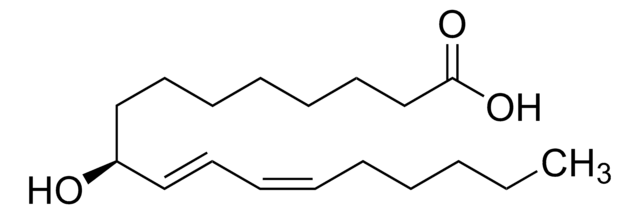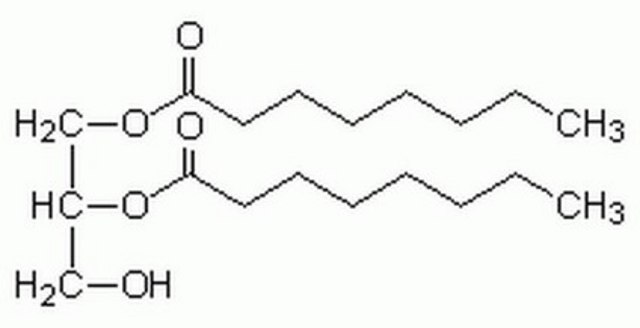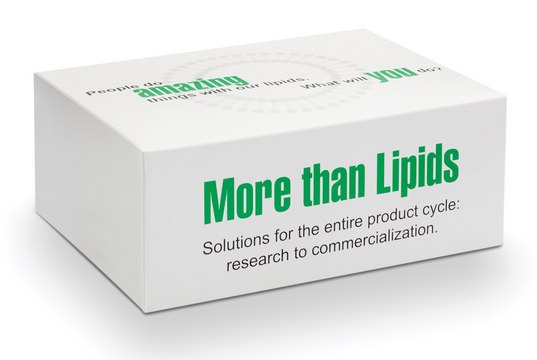900130E
Avanti
13(S)HODE
Avanti Research™ - A Croda Brand (900130E), ethanol solution
Synonym(s):
13S-Hydroxy-9Z,11E-octadecanoic acid
About This Item
Recommended Products
Assay
99% (TLC)
form
ethanol solution
packaging
pkg of 1 × 1 mg (900130E-1mg)
pkg of 1 × 500 μg (900130E-500ug)
manufacturer/tradename
Avanti Research™ - A Croda Brand (900130E)
concentration
1 mg/mL (900130E-1MG)
500 μg/mL (900130E-500UG)
lipid type
neutral glycerides
neutral lipids
shipped in
dry ice
storage temp.
−70°C
SMILES string
O[C@@H](CCCCC)\C=C\C=C/CCCCCCCC(=O)O
InChI
1S/C18H32O3/c1-2-3-11-14-17(19)15-12-9-7-5-4-6-8-10-13-16-18(20)21/h7,9,12,15,17,19H,2-6,8,10-11,13-14,16H2,1H3,(H,20,21)/b9-7-,15-12+/t17-/m0/s1
InChI key
HNICUWMFWZBIFP-IRQZEAMPSA-N
General description
Biochem/physiol Actions
Packaging
Legal Information
Signal Word
Danger
Hazard Statements
Precautionary Statements
Hazard Classifications
Eye Irrit. 2 - Flam. Liq. 2
Storage Class Code
3 - Flammable liquids
WGK
WGK 1
Flash Point(F)
55.4 °F
Flash Point(C)
13 °C
Regulatory Information
Choose from one of the most recent versions:
Certificates of Analysis (COA)
Sorry, we don't have COAs for this product available online at this time.
If you need assistance, please contact Customer Support.
Already Own This Product?
Find documentation for the products that you have recently purchased in the Document Library.
Our team of scientists has experience in all areas of research including Life Science, Material Science, Chemical Synthesis, Chromatography, Analytical and many others.
Contact Technical Service









